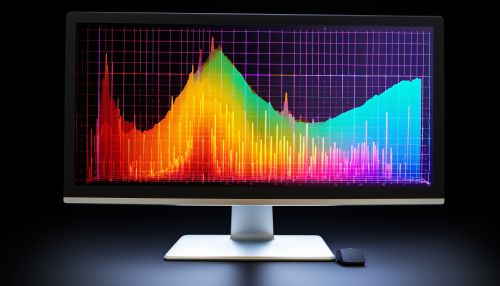Discriminant Analysis
Introduction
Discriminant analysis is a statistical technique used in the field of pattern recognition and machine learning. It is primarily used to classify objects into categories or groups based on their characteristics. Discriminant analysis is a part of multivariate analysis and is widely used in various fields such as biology, marketing, and finance.


Overview
Discriminant analysis is a method used to examine the differences between two or more groups of objects with respect to several variables simultaneously. These groups are known as the classes of the discriminant analysis. The main goal of discriminant analysis is to project the data in a higher dimensional space onto a lower dimensional space, in a way that maximizes the between-class variance and minimizes the within-class variance.
Types of Discriminant Analysis
There are two main types of discriminant analysis: linear discriminant analysis (LDA) and quadratic discriminant analysis (QDA).
Linear Discriminant Analysis
Linear discriminant analysis is a method used to find a linear combination of features that characterizes or separates two or more classes of objects. The resulting combination may be used as a linear classifier, or more commonly, for dimensionality reduction before later classification.
Quadratic Discriminant Analysis
Quadratic discriminant analysis is a variant of discriminant analysis that allows for non-linear separation of data. Unlike LDA, QDA assumes that each class has its own covariance matrix. In other words, it does not assume that the covariance of each of the classes is identical.
Applications of Discriminant Analysis
Discriminant analysis has a wide range of applications in various fields. Some of these include:
- In biology, it is used for the classification of different species based on their morphological characteristics.
- In marketing, it is used to classify customers into different segments based on their purchasing behavior.
- In finance, it is used to classify companies into different risk categories based on their financial ratios.
Limitations of Discriminant Analysis
Despite its wide range of applications, discriminant analysis has several limitations. Some of these include:
- Discriminant analysis assumes that the variables are normally distributed. This assumption may not hold in real-world data.
- Discriminant analysis is sensitive to outliers. Outliers can significantly affect the discriminant function and lead to misclassification.
- Discriminant analysis assumes that the covariance matrices of the groups are equal. This assumption may not hold in real-world data.
Conclusion
Discriminant analysis is a powerful statistical tool that is used for classification and dimensionality reduction. Despite its limitations, it is widely used in various fields due to its ability to handle multivariate data and its ease of interpretation.
